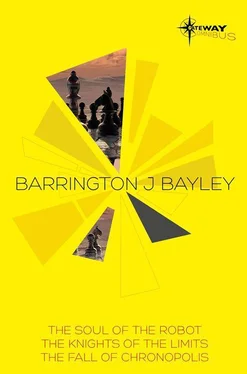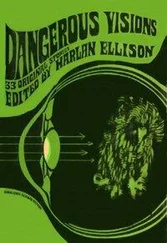I had just smoked my second pipe of opium and was settling into a pleasant reverie. The opium smell, a sweet, cloying and quite unique odour, still hung in the air of my study, mingling with the aroma of the polished mahogany bookcases and the scent of flowers from the garden. Through the open window I could see that garden, with its pretty shrubs and crazy pathways, and beyond, the real ball of the far-off sun sinking through strata of pink and blue clouds.
My attention, however, was on the chessboard before me. Perhaps I should say a few words about myself. I believe that my brief participation in ‘orthodox’ experimental research may permit me to call myself a man of science, although these days my studies are more mathematical and deductive. It will surprise some that my main interest throughout my life has been alchemy. I have myself practised the Hermetic Art with some assiduity, if only to feel for myself the same numinousness experienced by my alchemistic forebears in manipulating the chemical constituents of the world. Hence I have known what it is to search for the prima materia (which others call the Philosopher’s stone, being the root of transformation); and I have pondered long and deeply on that profoundly basic manual, the Emerald Table of Hermes Trismegistus.
Unlike most contemporary men I am not inclined to the belief that alchemy has been rendered obsolete by modern science, but rather that its inadequate techniques and theories have been temporarily outstripped, while the essence of the Art remains unapproached. In the not too distant future the reverent search for prima materia may once again be conducted with the full charisma of symbology, but employing the best of particle accelerators. If the outlook I am displaying seems to run counter to the spirit of inductive science, let me admit that my thoughts do sometimes wander, for good or ill, outside the pale wherein dwell the more active members of the scientific community. There is value, I believe, in looking back over the history of science as well as forward to future expectations. I am not, for instance, hypnotised by the success of atomic theory, as are practically all of my colleagues. If I may be permitted to say so, the objections to the atomic view of nature listed by Aristotle have never been answered. These objections are still valid, and eventually they will have to be answered – or vindicated – on the level of subnuclear physics.
Opium has the happy conjunction of both inducing a feeling of relaxation and well-being and of opening the inner doors of the mind to a realm of colourful creativity. By opium, it is conjectured, Coleridge glimpsed the poem Kubla Khan , only fragments of which he managed to remember. By opium I met my new, though sadly soon-departed, friend, the Chessboard Knight.
A chessboard, to recapitulate the obvious, consists of 8×8 locations, or ‘squares’ arranged in a rectilinear grid. To us, the chessboard represents a peculiarly restricted world. The entities, or ‘pieces’ of this world are distinguished from one another only by their power of movement: a pawn can only move forward, one square at a time; a castle can move longitudinally for up to eight squares, a bishop likewise diagonally, and a knight can move to the opposite corner of a 2×3 rectangle. For all pieces movement is always directly from square to square, with no locations existing between the squares: none of them possesses the power of continuous, non-discrete movement we enjoy in our own world. On the other hand none of us possesses the power of simultaneous transition from location to location enjoyed by chessmen, particularly by the knight, who is unimpeded by intervening obstacles.
A rapid succession of similar thoughts was passing through my head as I gazed at the chessboard, though ostensibly to study the game laid out thereon, which I was playing by letter with a distant correspondent. As sometimes happens when smoking opium, time suddenly slowed down and thoughts seemed to come with incredible speed and clarity. Normally, I mused, one would unhesitatingly suppose our real physical world to be the superior of the chessboard world, because no limitation is placed upon the number of locations we may occupy. No arbitrary laws restrict me from moving in any way I please about my study, my garden, or the countryside beyond. But is that so important? The significance of chess lies not in its very simplified space-time environment but in the relation the pieces hold to one another. By this latter criterion our own degree of freedom undergoes a drastic reduction: the number of stances I can hold in relation to my wife, to my friends or to my employer (though being retired, I have no employer) is by no means greater; insignificant, in fact, when compared to the infinite number of relationships that would obtain by mathematically permutating all possible locations in our continuum of physical space. Is it an unfounded presumption, then, that our own work of continuous consecutive motions is logically any more basic to nature, or any richer in content, than one based on the principle of the chessboard, comprising discrete transitions between non-continuous locations?
I had reached thus far in my speeding express-train of thought when before my dazed eyes the chess pieces, like a machine that had suddenly been switched on, began flicking themselves around the board, switching from square to square with all the abruptness of the winking patterns of lights on a computer console. After this brief, flurried display they arranged themselves in a formation which left the centre of the board empty and were still – except for the White King’s Knight, who went flickering among them in his corner-turning manner, executing a dizzying but gracefully arabesque circuit of the board before finishing up in the centre, where he turned to me, bowed slightly, and lifted his head to speak to me in a distant, somewhat braying tone.
In my drugged state this happening did not induce in me the same surfeit of bewilderment and incredulity that would normally, I believe, have been my reaction. Astonished I certainly was. It is not every day that one’s chess set shows a life of its own, or that the pieces remain so true to their formal nature as laid down by the rules that they move from one position to another without bothering to traverse the spaces between. Not, let me add for the sake of the record, that the pieces showed any carelessness or laziness, or that they took short cuts. In order to move, say, from Qkt4 to Kr4, a castle was required to manifest himself in all the intervening squares so as to show that he came by a definite route and that the way was unimpeded – only the Knight flashed to his opposite corner unperturbed by whatever might surround him. These manifestations were, however, fleeting in the extreme, and nothing was ever seen of the castle in between adjacent squares – because, naturally, in a game of chess there is no ‘between adjacent squares’.
But I jump ahead of myself. My astonishment was so great that I missed the Knight’s first words and he was obliged to repeat himself. What he said was:
‘We enter your haven with gratitude.’
His voice, as I have said, was distant, with a resinous, braying quality. Yet not cold or unpleasant; on the contrary it was cordial and civilised. I replied:
‘I was not aware that you were in need of haven; but that being the case, you are welcome.’ In retrospect my words might appear to have received weighty consideration, but in fact they were flippant and extemporary, the only response my brain could form to an impossible situation. And so began my conversation with the Chessboard Knight, the strangest and most informative conversation I have ever held.
So total was my bemusement that I accepted with an unnatural calmness the Knight’s announcement that he was a space explorer. My sense of excitement returned, however, when he went on to explain that he was not a space explorer such as our imagination might conjure by the phrase, but that he was an explorer of alternative types of spatial framework of which, he assured me, there were a good number in the universe. What we are pleased to call the sidereal universe, that is, the whole system of space-time observable by us on Earth, is merely one among a vast range of various systems. Even more astounding, in the circumstances, was the revelation that the Knight hailed from a system of space identical to that which I had a moment before been contemplating! One analogous to a game of chess, where space, instead of being continuous and homogeneous as we know it, was made up of discrete locations, infinite or at any rate indefinite in number, and to which entities can address themselves instantaneously and in any order. There is no extended spatial framework in which these locations are ordered or arrayed and all locations are equally available from any starting point (provided they are not already occupied). An entity may, however, occupy only one location at a time and therein lies the principle of order in this well-nigh incomprehensible world. Structures, systems and events consist of convoluted arabesque patterns of successive occupations, and of the game-like relationships these manoeuvres hold to one another. The chess-people’s analogy of a long distance takes the form of a particularly difficult sequence of locations; alternatively the sequence could correspond to a particularly clever construct or device – the chess-people make little distinction between these two interpretations.
Читать дальше












